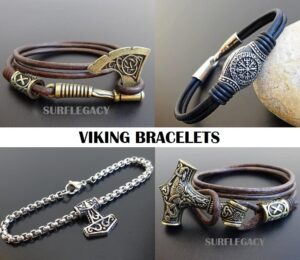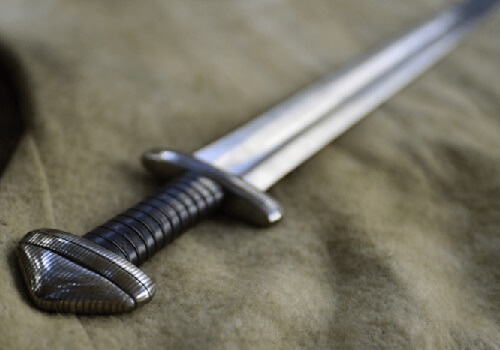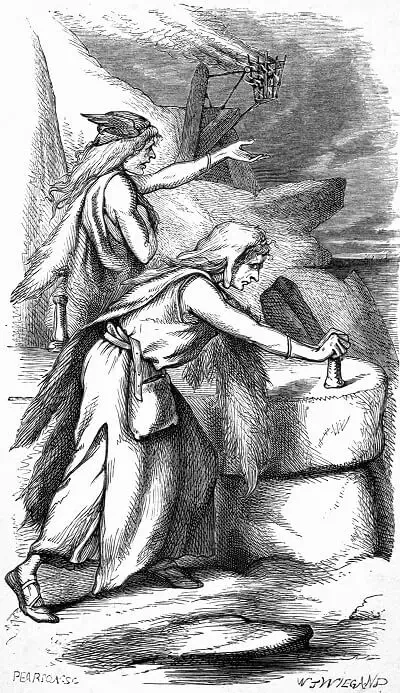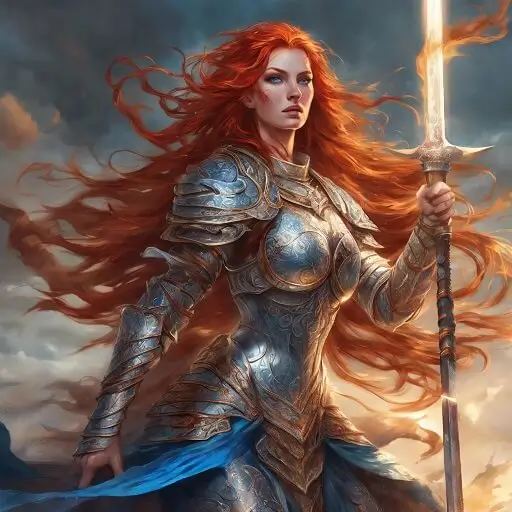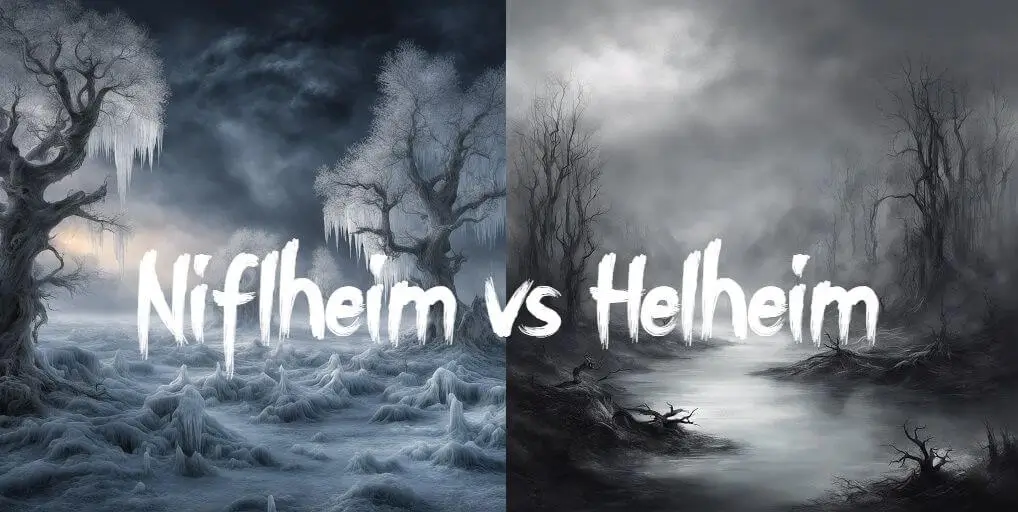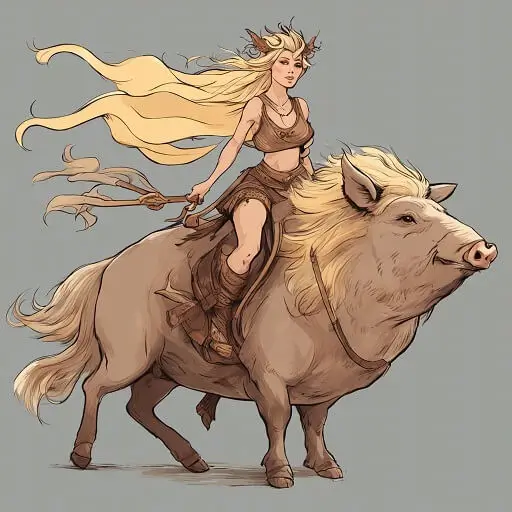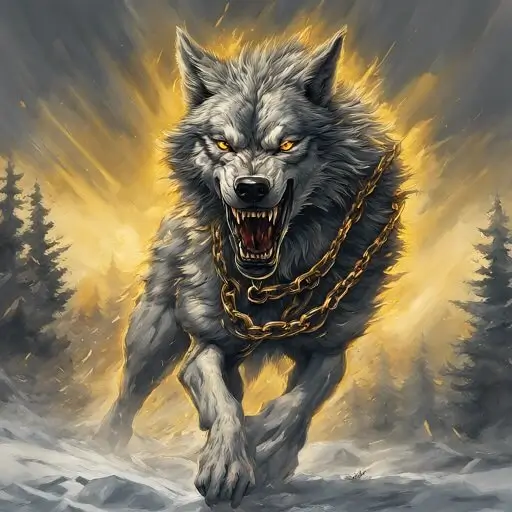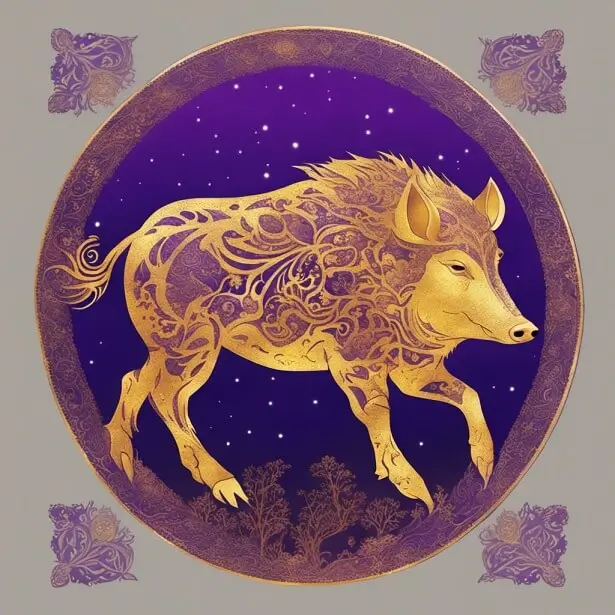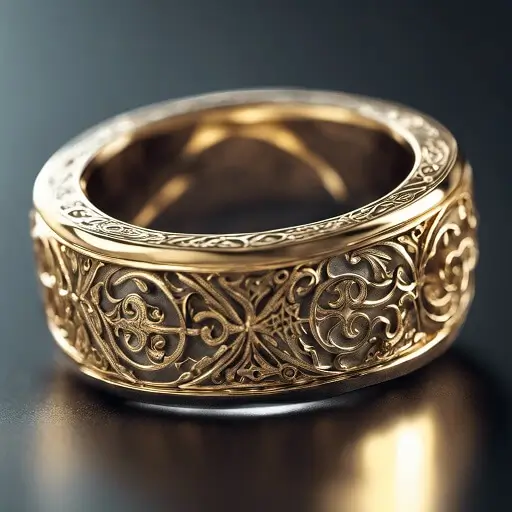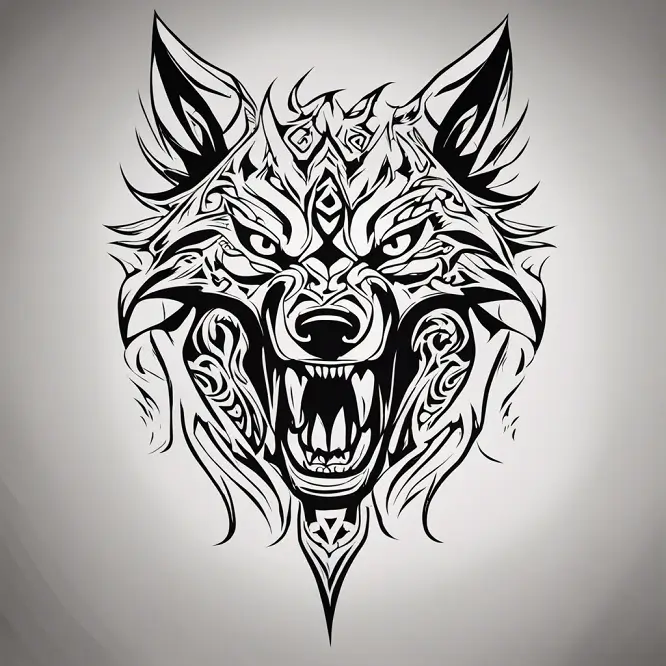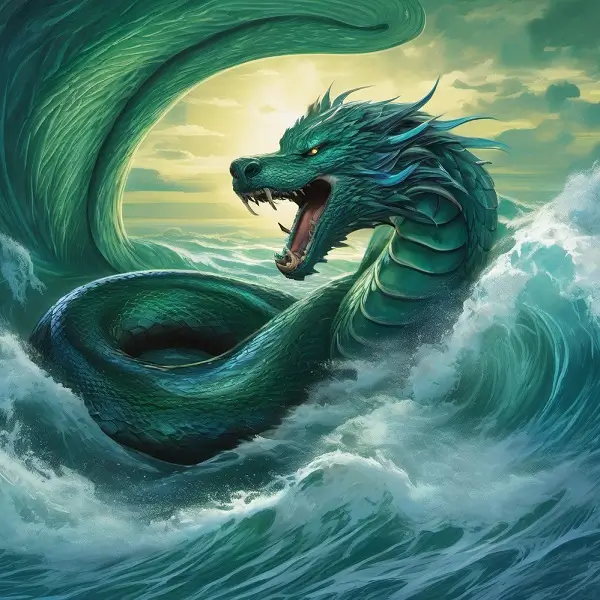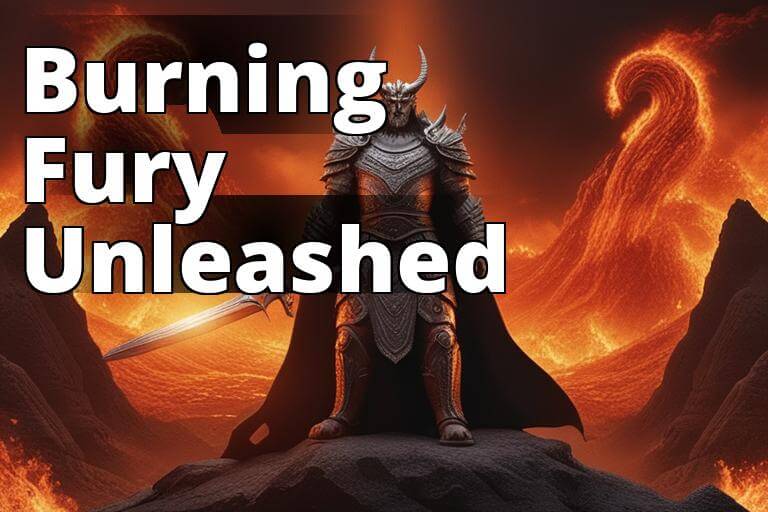Within the vast tapestry of Norse mythology, unfolds the epic saga of Tyrfing, woven around a fabled sword that captivates and brings forth tragedy. Known as Tyrfing, Tirfing, or Tyrving, this mythical weapon carries uncertain origins, possibly linked to the enigmatic Terwingi people, an ancient Germanic tribe.
Through the Tyrfing Cycle, which includes the renowned poem Hervararkviða from the Poetic Edda and the Hervarar saga, the tale of Tyrfing stands as a symbol of its significance within Norse folklore, even coming to denote the Goths in the saga itself.
The Origins of Tyrfing
The etymology of the name Tyrfing remains elusive, with its connection to the Terwingi veiled in mystery and speculation. The form “Tervingi” is recorded in Roman sources from the 4th century, providing a historical link that adds intrigue to the sword’s story.
Its creation is intertwined with the figure of Svafrlami, the king of Gardariki and a grandson of Odin. Svafrlami managed to ensnare the dwarfs Dvalinn and Durinn when they ventured from their dwelling. Exploiting their skills, he coerced them into forging a sword with a golden hilt, destined to be unparalleled in its prowess.
This magical blade was said to never miss its target, never rust, and cut through stone and iron as easily as through cloth.
The dwarfs crafted the sword, which radiated with an ethereal glow akin to fire. However, in an act of vengeance, they cursed it with a dark fate.
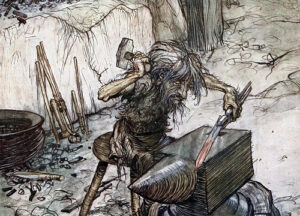
The blade would claim a life every time it was unsheathed, and it would become the catalyst for three great calamities.
Most significantly, it was imbued with a curse that ensured Svafrlami’s demise as well. Upon hearing the curses, Svafrlami sought to slay Dvalinn, but the dwarf disappeared into the rock, evading his intended fate. The sword, however, was driven deep into the stone, awaiting its next chapter in the hands of a new bearer.
Tyrfing’s Journey and the Curse Unleashed
The fateful encounter between Svafrlami and the berserker Arngrim sealed the sword’s destiny. Arngrim took possession of Tyrfing, wielding its formidable power.
After Arngrim, the sword passed into the hands of Angantyr, along with his eleven brothers. However, their fate would be sealed on the island of Samsø when they faced the Swedish champion Hjalmar and his Norwegian sworn brother Orvar-Odd.
In the midst of the battle, Tyrfing’s curse claimed its first victim, as Hjalmar, wounded by the blade, sang his death-song before his final breath. He entrusted Orvar-Odd with the task of bringing his body to his beloved Ingeborg, daughter of Yngvi, in Uppsala.
Angantyr’s daughter, Hervor, raised as a bond-servant and unaware of her noble lineage, embarked on a quest to reclaim her father’s weapon. Armed as a shieldmaiden, she journeyed to Munarvoe in Samsø, where she succeeded in locating Tyrfing.
Eventually, she married Höfund, the son of King Gudmund, and together they had two sons, Heidrek and Angantyr. In secrecy, Hervor entrusted the sword to Heidrek. During a fateful encounter between Angantyr and Heidrek, the curse placed upon the sword by the dwarfs manifested once again.
As Heidrek unsheathed Tyrfing, compelled by the curse, he inadvertently struck down his own brother, Angantyr, marking the second of Tyrfing’s three evil deeds.
The Final Curse and Resolution
Heidrek, now the king of the Goths, embarked on a voyage that led him to camp at the Carpathians, known as Harvaða fjöllum in Old Norse. Accompanied by eight mounted thralls, he never anticipated the treacherous act that would seal his fate.
In the dead of night, the thralls entered his tent and ruthlessly slew him in his sleep, fulfilling the third and final of Tyrfing’s evil deeds. Heidrek’s son, also named Angantyr, rose to avenge his father’s death. He hunted down and killed the treacherous thralls, reclaiming the magic sword and ultimately bringing an end to the curse inflicted upon it by the dwarfs.
Angantyr assumed the throne of the Goths, but his rule faced a challenge from his illegitimate half-Hun brother, Hlod. Hlod, driven by a lust for power, demanded half of the kingdom. Refusing to yield, Angantyr confronted Hlod, with the fate of the Goths hanging in the balance.
In the climactic Battle of the Goths and Huns, Hlod and his vast army of 343,200 mounted Huns descended upon the Goths, greatly outnumbering them. However, Angantyr, wielding the formidable sword, struck down his half-brother on the battlefield, turning the tides of the conflict.
The aftermath of the battle was a scene of carnage, as the bodies of warriors choked the rivers, causing a flood that filled the valleys with the fallen.
The Curse of Tyrfing and its Parallels
The curse that plagues Tyrfing finds parallels in the tales of other mythological artifacts. Similar to the curse placed upon the ring Andvaranaut in the Völsung Cycle, Tyrfing’s destiny is entwined with darkness and tragedy. It serves as a cautionary reminder of the intricate web of fate and the unforeseen consequences that befall those who wield objects of great power.
Tyrfing in Literature
The theme of a cursed sword that brings about evil deeds when drawn has captivated several modern fantasy writers. One notable example is Michael Moorcock’s Stormbringer, the magical sword wielded by the ill-fated albino emperor Elric of Melniboné.
Poul Anderson also incorporated Tyrfing into his medieval fantasy novel, The Broken Sword, exploring its dark and cursed nature. Lawrence Watt-Evans approached the theme in a more lighthearted manner in his work, The Misenchanted Sword. Additionally, Tyrfing has found its place in the novel The Quickleys and the Keeper of Balance by M.J. Packham.
Tyrfing in Pop Culture
Tyrfing has been referenced in various modern contexts that draw inspiration from Norse mythology. It has been used as the name of a hot sauce on the show Hot Ones.
In the anime series High School DxD, Tyrfing is depicted as a “demon sword.” It also appears as a holy weapon in the game Fire Emblem: Genealogy of the Holy War.
In the renowned video game Castlevania: Symphony of the Night, Tyrfing is portrayed as a cursed sword. These references demonstrate the enduring appeal of Tyrfing and its integration into contemporary media and entertainment.
Faqs
What does the name Tyrfing mean?
The name in Norse mythology does not have a definitive meaning. Its etymology remains uncertain, and scholars have proposed various theories regarding its origin. Some suggest a possible connection to the Terwingi, an ancient Germanic tribe mentioned in Roman sources. However, the exact meaning and linguistic roots of the name Tyrfing remain a subject of debate and speculation among researchers and mythologists. The mysterious nature of the name adds to the allure and intrigue surrounding the legendary sword in Norse mythology.
What are the powers of Tyrfing in Norse mythology?
Tyrfing is a magical sword that possesses the ability to never miss a stroke, cut through stone and iron effortlessly, and cause the death of a man every time it is drawn.
What are the difference between the following sword: Laevateinn, Tyrfing and Gram?
Each of these swords possesses unique characteristics and carries its own significance within the mythology.
Laevateinn, a small magical dagger or wand, is a mysterious weapon with limited information surrounding it. It is mentioned in the poem Fjölsvinnsmál and is said to be kept in the Norse Underworld, Hel, within an iron chest secured with nine locks. Associated with Loki, the god of mischief, there are suggestions that Laevateinn could be the mistletoe arrow or dart used by Loki to inadvertently cause the death of the sun god Baldr. Baldr’s death, in turn, played a crucial role in the events leading to Ragnarok, the cataclysmic battle of the gods.
Tyrfing, on the other hand, is a renowned magical sword featured in the Tyrfing Cycle. Forged by dwarfs, Tyrfing possesses extraordinary qualities, including a golden hilt, impeccable precision, and the ability to effortlessly cut through stone and iron. However, it is cursed, and each time it is drawn, it brings harm and death, leading to three great evils. This cursed nature brings a tragic and ominous aspect to the sword’s power and adds a layer of complexity to its narrative.
Lastly, Gram, known as the sword of the hero Sigurd, represents heroism and valor. It is associated with heroic exploits and played a pivotal role in Sigurd’s slaying of the dragon Fafnir. Gram has the remarkable ability to cleave through iron and stone, symbolizing the strength and bravery of its wielder. Unlike Tyrfing, it is not burdened by a curse, further emphasizing its connection to heroic deeds and the triumph of good over evil.
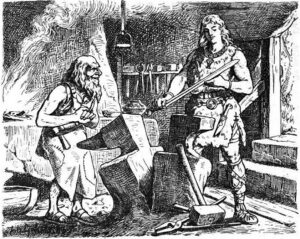
Sigurd examines the sword Gram (1901) by Johannes Gehrts
Conclusion
The legendary sword of Norse Mythology, continues to capture the imagination with its enigmatic origins and tragic narrative. Through the passages of the Tyrfing Cycle, the story of this magical blade unfolds, entangling heroes and villains alike in a tapestry of curses, fate, and epic battles. As we delve into the rich mythology of Tyrfing, we uncover the enduring power of ancient sagas and the profound impact they have on our understanding of Norse folklore and the human experience.
Shop Viking Jewelry
Are passionate about Vikings or Norse Mythology?
Finding the ideal piece of Viking Jewelry can be challenging and time-consuming, especially if you lack inspiration or don’t know where to look.
Surflegacy, has you covered. We have a wide range of Handmade Jewelry in various styles, shapes, colors, and materials, to accentuate your Viking spirit and look. Do not hesitate to visit our selection HERE
Whatever you wear, you’ll find the ideal trendy piece to complement your wardrobe. Our jewelry is designed to be worn every day, no matter where you go or what season is. Are you ready to step up your wardrobe game?